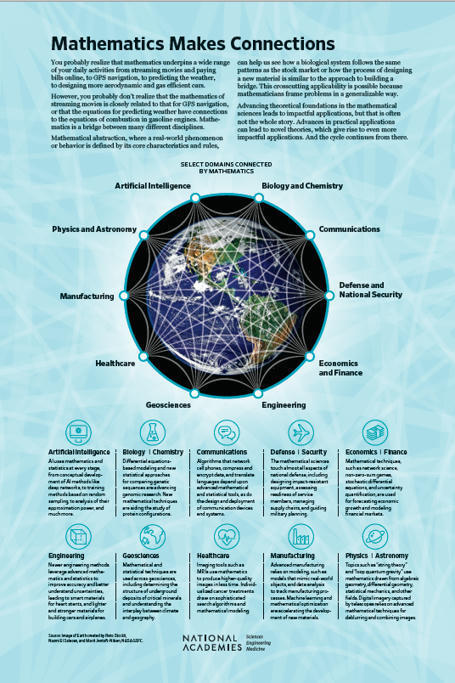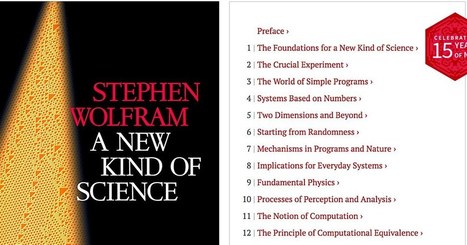Today’s mathematical research, both pure and applied, is paving the way for major scientific, engineering, and technological breakthroughs. Cutting-edge work in the mathematical sciences is responsible for advances in artificial intelligence, manufacturing, precision medicine, cybersecurity, and more. Find out how the mathematical sciences are helping to improve our everyday lives by checking out the stories and infographics below.
This series of illustrations shows how advances in the mathematical sciences anticipate and enable later technologies that profoundly impact our daily lives, including life-saving advances in medical imaging and treatment, predictive traffic-avoiding routing, communications advances enabling GPS and high-speed cellular communications, safer online commerce with cryptographic security protocols, development of novel materials based on advanced simulations, improved forecasting of extreme weather events, and much more.
The leaps forward in technology have often built upon theoretical work whose impact would not have been predicted at the time of their creation. The same is true today: researchers and practitioners in the mathematical sciences continue to innovate, and we can only begin to imagine the future inventions their work will enable. Mathematical and statistical advances are playing a key role in emerging areas such as cyber warfare, quantum computing, artificial intelligence and machine learning for automation, genetic sequencing and related advances in vaccine creation to fight novel and existing viruses, and supply chain management.
The increasing pace of technological and social development will require many more advances in the mathematical sciences because they are a foundation for advances across science, medicine, business, finance, and even entertainment. New discoveries in mathematics happening today will reverberate for decades and centuries to come.



 Your new post is loading...
Your new post is loading...











